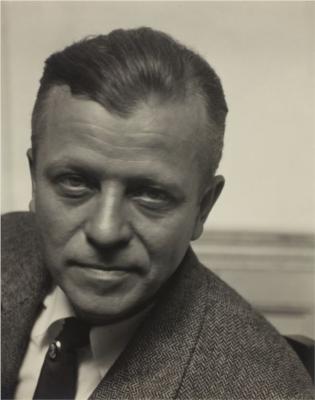August 2 is the birthday of American artist Arthur Dove (1880-1946). Crystal Bridges collection contains two paintings by Dove, plus nine others in the Alfred Stieglitz Collection, held jointly by Crystal Bridges Museum of American Art and Fisk University.
“My wish is to work so unassailably that one could let one’s worst instincts go unanalyzed, not to revolutionize or reform, but to enjoy life out loud.” –Arthur Dove
It may surprise you to learn that even as he proclaimed his desire to “enjoy life out loud,” the American painter Arthur Garfield Dove was known by many in the New York art world as “the whispering kid.” Dove, born on August 2, 1880, was known to his contemporaries as a quiet, sensitive soul. This artist often sought refuge and inspiration in nature, rejecting the fast pace of modern city life while at the same time embracing the exciting visual possibilities of the still young twentieth century.
Other artists of his generation like Max Weber and Alfred Maurer preferred the dynamic environments of fast-growing urban centers like New York and Paris, while Dove posted himself on periphery of the art world. While in France between 1908 and 1909 Dove delighted in painting in the sun-drenched countryside of the south of France while his close friend Maurer preferred the heady intellectual climate of Paris. Shortly after Dove returned to the New York scene and exhibited alongside Weber, John Marin, and Marsden Hartley at Alfred Stieglitz’s “291” Gallery, he escaped to a farm in Westport, Connecticut, and then later took up residence on a boat on Long Island Sound.
Over the course his career Dove’s style continually evolved, but what endured was his sensitive eye and his profound belief in the spiritual union of man and nature. Take for instance his 1928 painting Moon in the Crystal Bridges collection, where the beams of a golden moon radiate in concentric circles across a dark sky. Dove’s broad, densely packed brushstrokes emphasize his fascination with the rhythms of nature and the physical qualities of paint. Some critics, like Paul Rosenfeld, appreciated Dove’s wish to make visible the unseen forces and energies of nature. Rosenfeld compared Dove’s work to the poems of Walt Whitman, the American poet who placed importance on direct contact with nature. Rosenfeld quipped that Dove’s work represented “‘Leaves of Grass’ through pigment,” and the painter’s work held the “power of making the whole of life rich and sensible.”

Moon, 1928
Arthur Garfield Dove, 1880 – 1946
Oil on board
Alfred Stieglitz Collection, Co-owned by Fisk University, Nashville, Tennessee, and Crystal Bridges – Museum of American Art, Inc., Bentonville, Arkansas
Dove’s Red Tree and Sun, also a part of the Museum’s collection, displays a similar, lush painting style but an entirely different color palette. The composition is anchored by the trunk of a red tree, silhouetted against a golden sky. Color, for Dove, was irreducible from form. By his thinking, every living thing is perceived by the eye through its “condition of light;” its color and form “carefully chosen by nature to fit the life going on in that living entity.” In this painting Dove explores the “condition of light” concept by using intense colors, meant to illustrate his personal experience of a landscape on a bright, sunny afternoon.

Arthur Garfield Dove, 1880 – 1946
Red Tree and Sun, 1929
Oil on canvas
Alfred Stieglitz Collection, Co-owned by Fisk University, Nashville, Tennessee, and Crystal Bridges Museum of American Art, Bentonville, Arkansas

Arthur Garfield Dove, 1880 – 1946
Something in Brown, Carmine, and Blue, 1927
Oil on metal
Alfred Stieglitz Collection, Co-owned by Fisk University, Nashville, Tennessee, and Crystal Bridges Museum of American Art, Bentonville, Arkansas
Landscape was a favorite subject of Dove’s, given his deep love for nature and painting en plen air (outdoors). Some of his paintings delve more deeply into his personal response to the natural world, such as Something in Carmine, Brown, and Blue of 1927. The subdued, earthy colors bring to mind natural elements, while repeated waving lines unite the canvas and suggest vibration. These stylistic elements make the painting an exploration of space, color, and the unseen forces that govern the universe. Dove believed that the act of artistic creation could reveal these truths because the artist is able to see past everyday appearances. Dove referred to his process as “extraction,” explaining that “[abstraction] is extraction, gravitation toward a certain direction, and minding your own business.” Or, in other words, the painter should be guided by his own perception of color and form.
Ultimately Dove’s goal to “enjoy life out loud” lives on through his many paintings. His work communicates his closely held love of nature and the strong spiritual connection that he believed bound man to the whole of the universe. Though his style often confounded critics during his lifetime, one of the best ways we can celebrate Dove’s life and work is through appreciating the bright and beautiful world he sought to capture through the union of paint and canvas.




